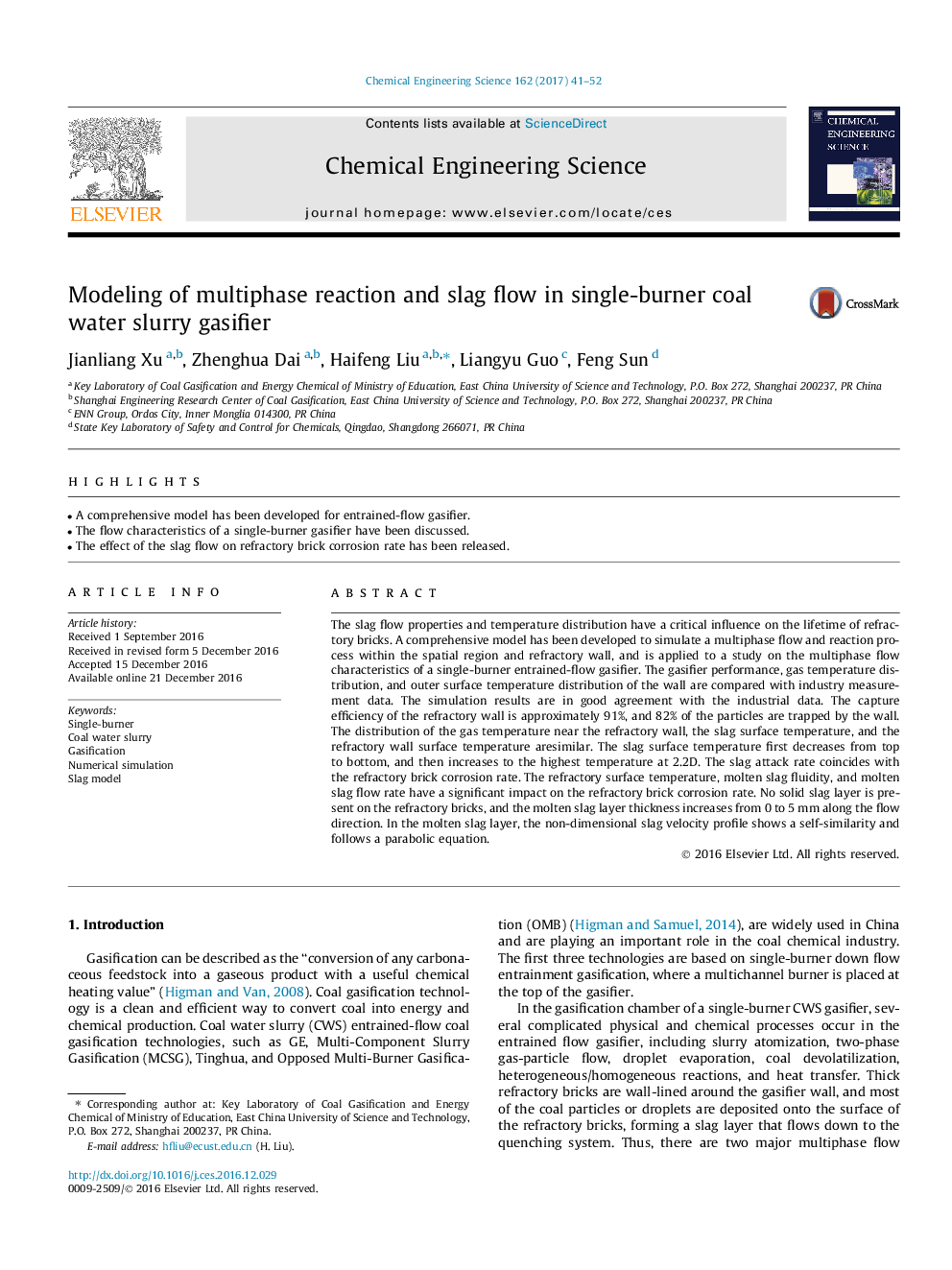| Article ID | Journal | Published Year | Pages | File Type |
|---|---|---|---|---|
| 6467431 | Chemical Engineering Science | 2017 | 12 Pages |
â¢A comprehensive model has been developed for entrained-flow gasifier.â¢The flow characteristics of a single-burner gasifier have been discussed.â¢The effect of the slag flow on refractory brick corrosion rate has been released.
The slag flow properties and temperature distribution have a critical influence on the lifetime of refractory bricks. A comprehensive model has been developed to simulate a multiphase flow and reaction process within the spatial region and refractory wall, and is applied to a study on the multiphase flow characteristics of a single-burner entrained-flow gasifier. The gasifier performance, gas temperature distribution, and outer surface temperature distribution of the wall are compared with industry measurement data. The simulation results are in good agreement with the industrial data. The capture efficiency of the refractory wall is approximately 91%, and 82% of the particles are trapped by the wall. The distribution of the gas temperature near the refractory wall, the slag surface temperature, and the refractory wall surface temperature aresimilar. The slag surface temperature first decreases from top to bottom, and then increases to the highest temperature at 2.2D. The slag attack rate coincides with the refractory brick corrosion rate. The refractory surface temperature, molten slag fluidity, and molten slag flow rate have a significant impact on the refractory brick corrosion rate. No solid slag layer is present on the refractory bricks, and the molten slag layer thickness increases from 0 to 5Â mm along the flow direction. In the molten slag layer, the non-dimensional slag velocity profile shows a self-similarity and follows a parabolic equation.
